
The Philippines, an archipelago of more than 7,000 islands, is a true paradise for travelers. Known for its incredible diversity, the country offers everything from pristine beaches to rich historical landmarks and vibrant cultural experiences. Whether you’re an adventurer, a history buff, or someone seeking tranquility, the Philippines has something for you. In this guide, we’ll explore some of the must-visit destinations across this tropical paradise.
1) Boracay Island, Aklan

(Photo by Darwin Frivaldo on Pexels)
Located in the Western Visayas region, Boracay is the Philippines’ most famous beach destination. Its White Beach is renowned globally for its ultra-fine, powdery white sand and crystal-clear waters, making it a top choice for beach lovers. The island, only 7 kilometers long, is filled with resorts, restaurants, and bars that offer the perfect blend of relaxation and entertainment.
For the more adventurous, Boracay offers a range of water sports. Bulabog Beach, located on the opposite side of the island from White Beach, is the hub for activities like kiteboarding and windsurfing due to its strong winds. There are also plenty of island-hopping tours that take visitors to nearby spots like Crocodile Island, a prime snorkeling site, and Puka Beach, which offers a more tranquil and less crowded experience.
Since its rehabilitation in 2018, Boracay has enforced stricter environmental regulations, allowing visitors to enjoy its beauty without the crowd-related wear and tear it experienced in the past. Today, Boracay is a sustainable destination that balances tourism and ecological preservation.
Must-Do Activities:
- Sunset sailing on a paraw (traditional sailboat).
- Visiting Mount Luho for a panoramic view of the entire island.
- Exploring Boracay’s vibrant nightlife with beachside bars and restaurants.
2) Palawan: El Nido and Coron
Palawan, often called the “last ecological frontier” of the Philippines, is a sanctuary of natural beauty. Among its many treasures, two standout destinations are El Nido and Coron.
El Nido, located at the northernmost tip of Palawan, is a dreamscape of towering limestone cliffs, hidden lagoons, and emerald waters. The island-hopping tours in El Nido are legendary, taking visitors to breathtaking spots like the Big Lagoon, Small Lagoon, and Secret Lagoon. Each location offers something unique—whether it’s the clear waters perfect for kayaking or hidden beaches accessible only through narrow passages between rocks.
For those seeking more solitude, Nacpan Beach offers 4 kilometers of undeveloped, golden sand and sparkling blue waters. Another favorite is Las Cabanas Beach, where visitors can zip-line across the sea from a nearby hill and enjoy one of the most picturesque sunsets in the Philippines.

(Photo by Eibner Saliba on Unsplash)
Coron, another gem in Palawan, is famous for its dive sites, particularly its World War II Japanese shipwrecks. The Coron Bay shipwrecks are some of the best-preserved in the world and are surrounded by thriving coral reefs teeming with marine life. Beyond wreck diving, Kayangan Lake is a must-visit. Often dubbed as the cleanest lake in the Philippines, Kayangan offers crystal-clear waters framed by limestone cliffs.
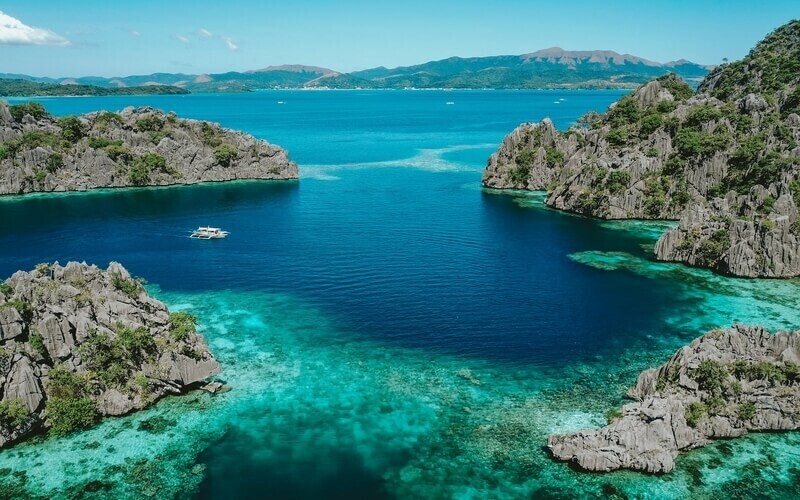
(Photo by John Hernandez on Unsplash)
Must-Do Activities:
- Explore Big and Small Lagoons via kayak in El Nido.
- Go snorkeling at Twin Lagoon in Coron.
- Hike to the Kayangan Lake Viewpoint for panoramic views of the turquoise waters and surrounding cliffs.
3) Banaue Rice Terraces, Ifugao
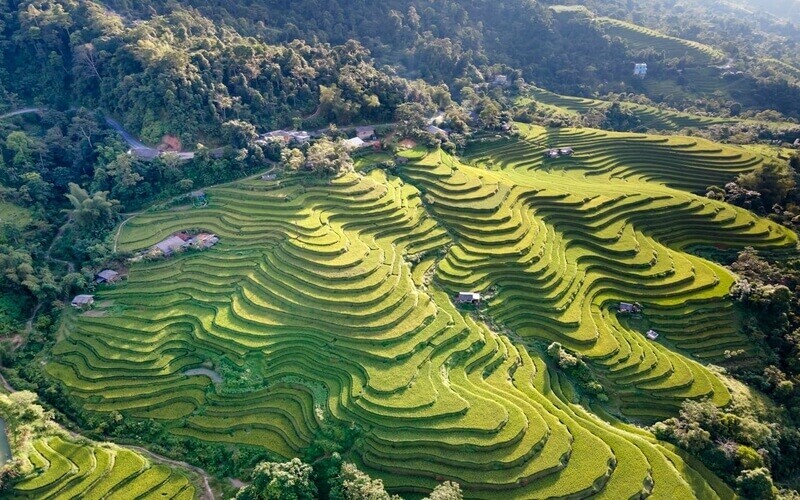
(Photo by Quang Nguyen Vinh on Pexels)
The Banaue Rice Terraces are a UNESCO World Heritage site and a testament to the engineering ingenuity of the indigenous Ifugao people. Carved into the mountains over 2,000 years ago, these terraces are still in use today for rice farming. The terraces stretch across the Cordillera mountain range, and their complex irrigation system channels water from nearby forests and rivers.
Visiting Banaue offers a glimpse into the life and culture of the Ifugao people. You can trek through the rice terraces, visit traditional Ifugao villages, and learn about their rich cultural practices that have survived for centuries. A highlight of the trip is visiting the Batad Rice Terraces, which are more remote but incredibly scenic, and shaped in a perfect amphitheater-like formation.
For adventure enthusiasts, the area also offers treks to Tappiya Falls, a spectacular waterfall nestled deep in the terraces. The cold, refreshing waters of the falls make for a perfect end to a day of hiking.
Must-Do Activities:
- Trek through the Batad Rice Terraces for a more secluded experience.
- Visit the Ifugao Museum to learn more about the region’s rich history and cultural heritage.
- Swim at the foot of the Tappiya Falls after a day of trekking.
4) Chocolate Hills, Bohol
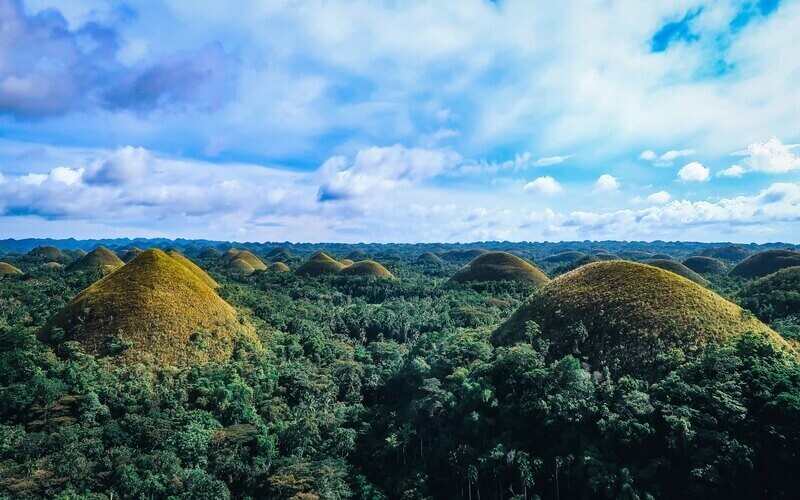
(Photo by Hitoshi Namura on Unsplash)
The Chocolate Hills are one of the most unique geological formations in the world. Located in Bohol, the 1,268 perfectly conical hills turn brown during the dry season, resembling rows of chocolate mounds, hence their name. The hills span an area of over 50 square kilometers and create a surreal landscape that is both picturesque and mysterious.
Beyond the Chocolate Hills, Bohol offers a variety of attractions. The island is home to the Philippine tarsier, one of the world’s smallest primates. Visitors can get up close to these adorable creatures at the Tarsier Conservation Area. Additionally, the Loboc River cruise offers a relaxing journey through lush forested riversides while enjoying local Filipino cuisine and traditional music.
Bohol is also home to the Panglao Island beaches, offering white sand, crystal-clear waters, and incredible diving spots, especially at Balicasag Island, known for its coral reefs and diverse marine life.
Must-Do Activities:
- Visit the Chocolate Hills Viewpoint for a panoramic view of the iconic hills.
- Take a relaxing Loboc River Cruise with a floating restaurant.
- Meet the tiny tarsiers at the Tarsier Sanctuary.
5) Mayon Volcano, Albay
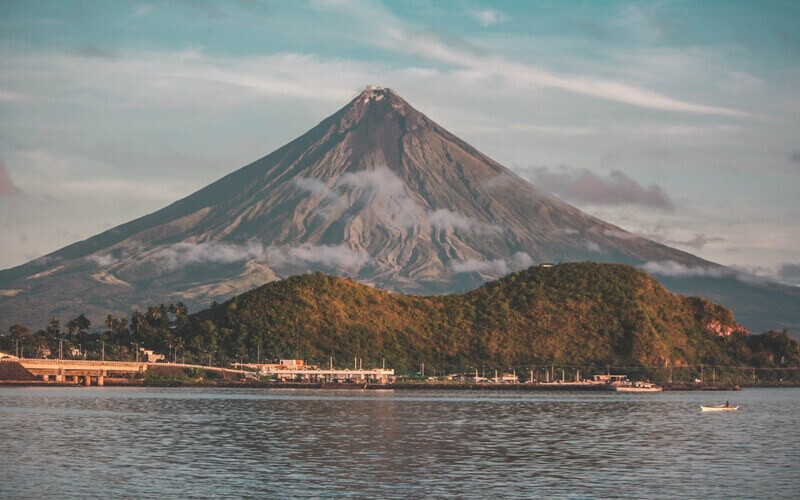
(Photo by Chriz Luminario on Pexels)
Towering over the province of Albay, Mayon Volcano is famous for its almost perfect cone shape, making it one of the most iconic and picturesque volcanoes in the world. Despite its beauty, Mayon is an active volcano with frequent eruptions. The last significant eruption occurred in 2018, but visitors can still admire its grandeur from a safe distance.
One of the best places to view Mayon is from the Cagsawa Ruins, the remains of a church that was buried by a massive volcanic eruption in 1814. Today, only the bell tower remains, offering a stark reminder of the volcano’s power. Despite the destruction it has caused, Mayon continues to be a symbol of resilience and natural beauty in the Philippines.
For adventure seekers, Mayon also offers activities like ATV rides through its lava trails, which provide a thrilling way to experience the area’s rugged terrain. You can also hike up its slopes, though due to its activity, certain areas may be restricted.
Must-Do Activities:
- Visit the Cagsawa Ruins and learn about the history of Mayon’s eruptions.
- Ride an ATV through the lava trails at the foot of the volcano.
- Climb to Lignon Hill for panoramic views of Mayon and the surrounding landscape.
6) Siargao Island, Surigao del Norte

(Photo by Alejandro Luengo on Unsplash)
Siargao Island, located in the northeast of Mindanao, is a surfer’s paradise. Known as the surfing capital of the Philippines, Siargao is home to Cloud 9, one of the best-known surf breaks in the world. The island has a laid-back, tropical vibe that attracts both surfers and non-surfers alike. Even if you’re not into surfing, Siargao offers a wide variety of activities that will keep you entertained.
Beyond surfing, the island boasts beautiful natural attractions such as the Sugba Lagoon, where you can paddleboard or swim in emerald-green waters surrounded by mangroves and cliffs. The Magpupungko Rock Pools are another highlight, with natural tidal pools that are perfect for swimming during low tide. Siargao’s island-hopping tours are also a must, taking visitors to nearby islets like Naked Island, Daku Island, and Guyam Island.
Must-Do Activities:
- Surf or watch the pros tackle the waves at Cloud 9.
- Take a boat ride to Sugba Lagoon and try paddleboarding.
- Swim in the Magpupungko Rock Pools during low tide.
7) Vigan, Ilocos Sur

(Photo by Assy Gerez on Unsplash)
Vigan, located in the province of Ilocos Sur, is one of the best-preserved Spanish colonial towns in Asia. Its cobblestone streets, horse-drawn carriages (called kalesa), and well-preserved ancestral homes make it a charming throwback to the Philippines’ Spanish colonial past.
A stroll down Calle Crisologo, the heart of Vigan, feels like stepping back in time. The street is lined with centuries-old buildings, many of which have been converted into museums, shops, or guesthouses. Vigan is also a UNESCO World Heritage site, recognized for its unique blend of Asian and European architectural influences.
Apart from the historical sites, Vigan is also known for its local cuisine. Vigan longganisa (a garlic-flavored sausage) and empanada are must-try dishes when visiting the town.
Must-Do Activities:
- Ride a kalesa down the historic Calle Crisologo.
- Visit the Bantay Bell Tower for panoramic views of the town and nearby countryside.
- Try the local delicacies like Vigan longganisa and bagnet (crispy pork belly).
8) Cebu City, Cebu
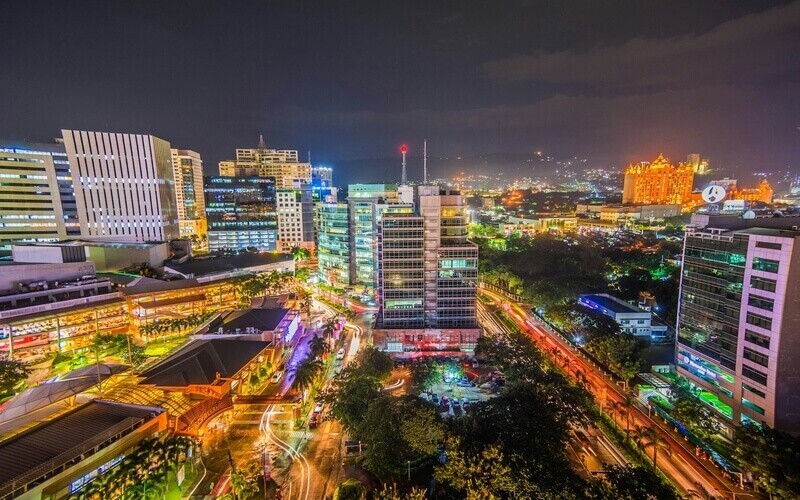
(Photo by Zany Jadraque on Unsplash)
Known as the “Queen City of the South,” Cebu is a perfect blend of urban energy and natural beauty. Cebu City, the oldest city in the Philippines, offers a wealth of historical sites that trace the country’s colonial past. One of the most significant landmarks is Magellan’s Cross, planted by Portuguese explorer Ferdinand Magellan in 1521 to mark the arrival of Christianity in the Philippines.
Cebu also offers a gateway to stunning natural attractions. Just a few hours from the city, you can visit Kawasan Falls, a multi-tiered waterfall with turquoise waters nestled in the jungle. It’s a popular spot for canyoneering, where you can climb, jump, and swim your way through the cascading falls. Another must-visit is Oslob, where you can swim with whale sharks, the gentle giants of the sea.
Must-Do Activities:
- Visit Magellan’s Cross and Fort San Pedro to explore Cebu’s colonial history.
- Canyoneer through the Kawasan Falls and swim in its bright blue waters.
- Swim with the whale sharks in Oslob for a once-in-a-lifetime experience.
9) Batanes
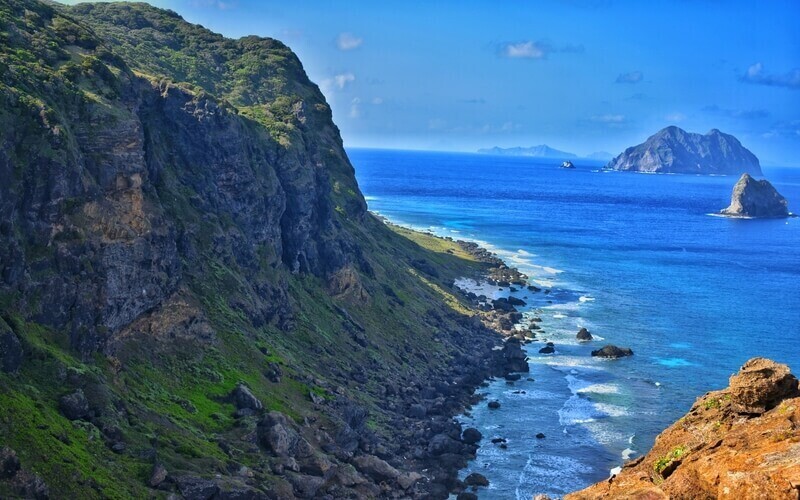
(Photo by Joseph Emmanuel Magallanes on Unsplash)
Batanes, the northernmost province in the Philippines, is often referred to as the country’s most scenic and serene destination. Known for its dramatic landscapes, Batanes is a land of rolling hills, rugged cliffs, and traditional stone houses that reflect its isolation and unique culture.
The Ivatans, the indigenous people of Batanes, have lived in harmony with nature for centuries, building houses made of thick stone and cogon grass to withstand the strong winds and frequent typhoons. Visitors can explore Basco Lighthouse, offering panoramic views of the island, and hike across Marlboro Hills, where the vast expanse of green pastures meets the crashing waves of the Pacific Ocean.
Sabtang Island and Itbayat Island offer further exploration into the unique Ivatan culture, with traditional villages like Chavayan, where stone houses still stand strong.
Must-Do Activities:
- Visit Basco Lighthouse for a scenic view of the island.
- Explore the rolling hills of Marlboro Country.
- Visit Sabtang Island and see the iconic Chavayan Stone Houses.
10) Sagada, Mountain Province

(Photo by Aldrino on Unsplash)
Sagada, nestled in the mountains of the Cordilleras, is a place of mystique and tranquility. Known for its cool weather and fog-covered landscapes, Sagada offers a unique mix of natural beauty and cultural heritage. The town is famous for its hanging coffins, an ancient burial tradition where coffins are placed high on cliff faces, as it was believed that being closer to the sky would bring the dead nearer to heaven.

(Photo by Palu Malerba on Pexels)
Sagada also offers a wealth of natural wonders. Sumaguing Cave is one of the most popular attractions, where visitors can spelunk through intricate rock formations and underground rivers. The Kiltepan Sunrise Viewpoint offers an unforgettable experience as the sun rises over a sea of clouds.
For those looking to unwind, Sagada is the perfect place to disconnect and immerse yourself in nature’s serenity.
Must-Do Activities:
- Visit the Hanging Coffins of Echo Valley to learn about the unique burial practices of the Igorot people.
- Explore the underground wonders of Sumaguing Cave.
- Watch the sunrise over a sea of clouds at Kiltepan Viewpoint.
11) Puerto Princesa Underground River, Palawan

(Photo by Elaine Ore on Unsplash)
The Puerto Princesa Underground River, located in Palawan, is one of the New Seven Wonders of Nature and a UNESCO World Heritage Site. This underground river stretches for over 8 kilometers through a limestone cave system, and visitors can take a boat tour through its intricate network of stalactites and stalagmites. The river emerges directly into the sea, creating a unique karstic landscape.
As you glide through the dark passages, guides point out various formations that resemble animals, vegetables, and even religious icons. The biodiversity within the park is also astounding, with many endemic species of flora and fauna living in and around the cave system.
For nature lovers, this site is an absolute must-see. Beyond the river, Honda Bay, located nearby, offers pristine beaches and snorkeling opportunities on small islands like Starfish Island and Pandan Island.
Must-Do Activities:
- Take a boat tour through the Underground River and marvel at the rock formations inside the cave.
- Relax on the white-sand beaches of Honda Bay and snorkel among colorful marine life.
12) Davao City and Mount Apo
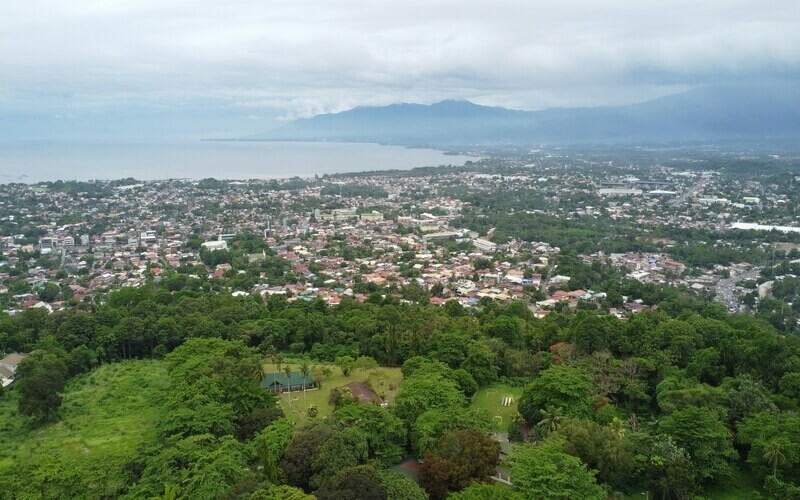
(Photo by Maynard Magallen on Unsplash)
Davao City, located on the southern island of Mindanao, is known for being one of the safest cities in the Philippines. The city is also famous for being the home of Mount Apo, the tallest peak in the country, standing at 2,954 meters (9,692 feet). Climbing Mount Apo is an unforgettable experience for mountaineers, offering panoramic views, rich biodiversity, and a chance to explore volcanic craters and mountain lakes.
For those less inclined to hiking, Davao offers other attractions, including the Philippine Eagle Center, where visitors can see the critically endangered Philippine eagle, one of the largest and most powerful eagles in the world. The city is also known for its fruit, particularly durian, which is either loved or loathed for its strong aroma.
Must-Do Activities:
- Climb Mount Apo, the tallest peak in the Philippines, for stunning views.
- Visit the Philippine Eagle Center and learn about conservation efforts for these majestic birds.
- Try the famous durian fruit, known as the “King of Fruits.”
Conclusion: The Philippines – A Land of Wonders
From the white-sand beaches of Boracay and the crystal-clear lagoons of Palawan to the ancient rice terraces of Banaue and the cultural richness of Vigan, the Philippines offers a wide array of experiences for every traveler. Each destination showcases a different aspect of the country’s natural beauty, history, and culture, making it an ideal travel destination for adventurers, beach lovers, and history enthusiasts alike.
Unique Fact: Did you know that the Philippines is home to more than 175 languages and dialects, with Filipino and English serving as the official languages? This rich linguistic diversity is a reflection of the country’s complex cultural history, making it a truly unique place in Southeast Asia. Safe travels and happy exploring!
